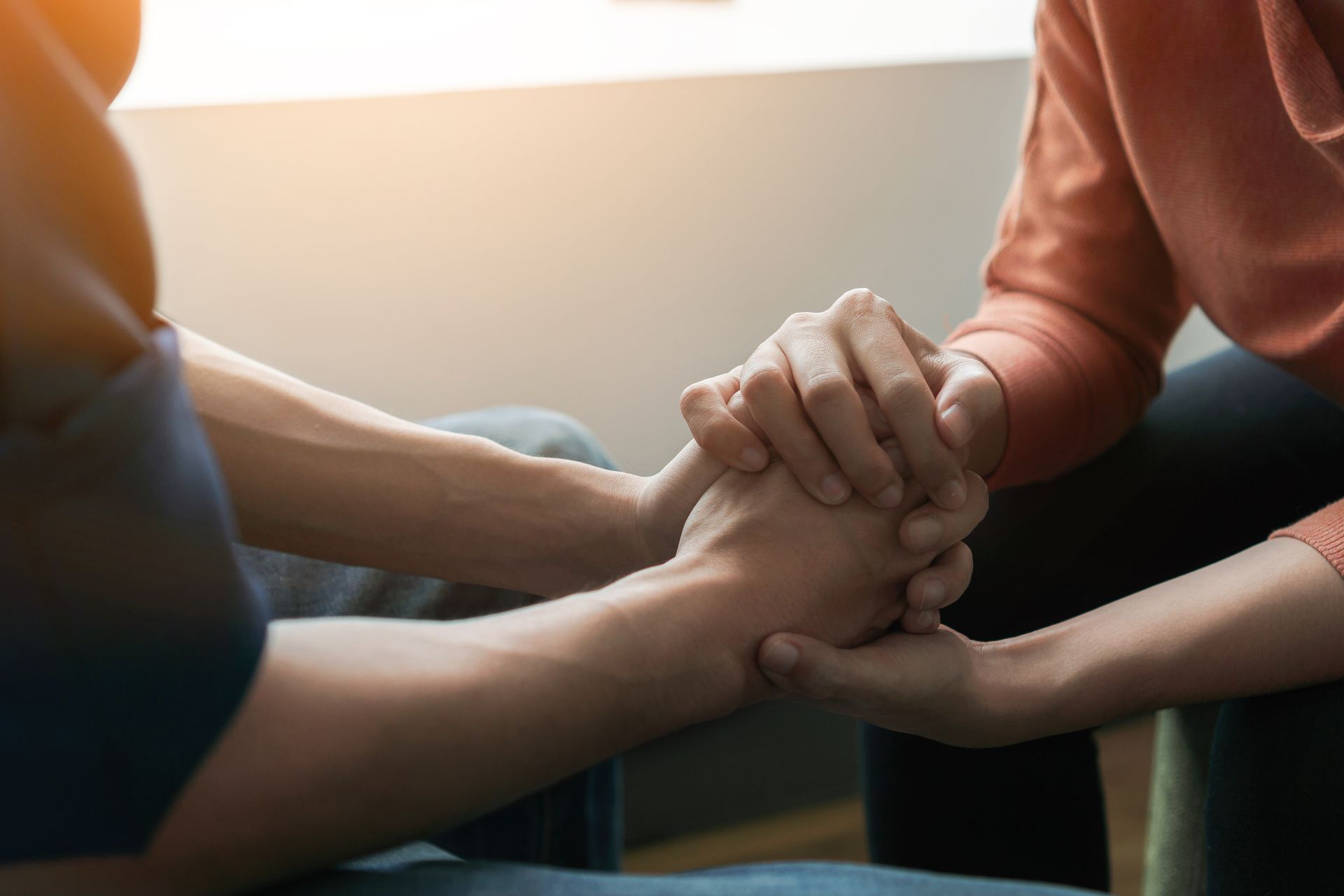Free initial consultations! Call now: (405) 921-7012
Breaking Down Phobic Disorders: Definitions, Types, and Treatments
Phobic disorders, characterized by intense and irrational fears, affect millions worldwide, impacting daily life and well-being. Understanding these disorders—from their definitions to available treatments—is crucial for both sufferers and those supporting them
Table of Contents:
Breaking Down Phobic Disorders: Definitions, Types, and Treatments
2. Social Anxiety Disorder (Social Phobia)
5. Recognition of Irrationality:
Effective Treatments for Phobic Disorders
1. Cognitive Behavioral Therapy (CBT):
Seeking Professional Help and Support
Contact Brian Stalcup Today and Begin Your Healing Journey
Frequently Asked Questions (FAQs) - Breaking Down Phobic Disorders
2. What are the common types of phobic disorders?
3. What are the symptoms of phobic disorders?
What are Phobic Disorders?
Phobic disorders, or phobias, are
anxiety disorders marked by persistent, excessive fears triggered by specific objects or situations. These fears can be irrational but are overwhelming to the individual, often leading to avoidance behaviors that can disrupt daily routines and social interactions
Types of Phobic Disorders
Phobic disorders, also known as phobias, are anxiety disorders characterized by intense and irrational fears triggered by specific objects, situations, or activities. These fears can lead to significant distress and avoidance behaviors that can interfere with daily life. Here are some common types of phobic disorders
1. Specific Phobias
Definition: Specific phobias involve intense fear and anxiety triggered by a particular object or situation. The fear is disproportionate to the actual danger posed by the object or situation.
Examples:
- Acrophobia (Fear of Heights): Individuals with acrophobia experience extreme fear when exposed to heights, such as tall buildings, bridges, or cliffs.
- Claustrophobia (Fear of Enclosed Spaces): This phobia involves fear of being in small, confined spaces or situations where escape might be difficult.
- Arachnophobia (Fear of Spiders): Arachnophobia is a common specific phobia characterized by fear of spiders or other arachnids.
- Ophidiophobia (Fear of Snakes): Individuals with ophidiophobia experience intense fear and anxiety when encountering snakes.
- Trypanophobia (Fear of Injections): This involves fear of needles or injections, which can lead to avoidance of medical procedures.
- Impact: Specific phobias can significantly disrupt daily routines and social activities as individuals may go to great lengths to avoid their feared objects or situations
2. Social Anxiety Disorder (Social Phobia)
Definition: Social anxiety disorder involves intense fear of social situations, particularly those involving scrutiny or evaluation by others.
Examples:
- Public Speaking Anxiety (Glossophobia): Fear of speaking in front of an audience, which can impact academic, professional, or social settings.
- Performance Anxiety: Fear of performing in front of others, such as in music, sports, or other public performances.
- Meeting New People: Anxiety and fear related to initiating or maintaining conversations, making new friends, or dating.
Impact: Social phobia can lead to avoidance of social interactions, which can impair relationships, educational achievements, and career opportunities
3. Agoraphobia
Definition: Agoraphobia involves fear of situations from which escape might be difficult or help might not be available in the event of a panic attack or other anxiety symptoms.
Examples:
- Fear of Crowded Places: Anxiety about being in shopping malls, stadiums, or other crowded spaces where escape routes may be limited.
- Fear of Using Public Transportation: Avoidance of buses, trains, or planes due to fear of being trapped or unable to escape.
Impact: Agoraphobia can lead to isolation as individuals may avoid leaving their homes or entering situations they perceive as unsafe or anxiety-provoking.
4. Other Phobias
There are numerous other specific phobias that can affect individuals, including:
- Animal Phobias: Fear of specific animals, such as dogs, cats, or birds.
- Natural Environment Phobias: Fear of natural phenomena, such as storms (astraphobia) or water (aquaphobia).
- Blood-Injection-Injury Phobia: Fear of blood, needles, or medical procedures.
- Situational Phobias: Fear of specific situations, such as flying (aviophobia) or driving (vehophobia).
- Treatment Options:
Treatment for phobic disorders often includes cognitive-behavioral therapy (CBT), exposure therapy, medications (such as antidepressants or anti-anxiety medications), and relaxation techniques. Seeking help from a professional therapist or psychiatrist can provide personalized strategies for managing and overcoming phobias, leading to improved quality of life and reduced anxiety
Symptoms of Phobic Disorders
Phobic disorders, commonly known as phobias, are anxiety disorders characterized by persistent, irrational fears that lead to intense anxiety and avoidance behaviors. These fears are often triggered by specific objects, situations, or activities.
Recognizing the symptoms of phobic disorders can help individuals seek appropriate treatment and support. Here are the key symptoms:
1. Intense Fear or Anxiety:
Individuals with phobic disorders experience an overwhelming and persistent fear that is out of proportion to the actual threat posed by the specific object or situation. This fear is immediate and uncontrollable
2. Physical Symptoms:
Panic Attacks: Sudden onset of intense fear or discomfort, often accompanied by physical symptoms such as rapid heartbeat (palpitations), sweating, trembling or shaking, shortness of breath, chest pain or discomfort, nausea or abdominal distress, dizziness, lightheadedness, feeling faint, chills or hot flashes.
Fight or Flight Response: Activation of the body's stress response, including increased heart rate, elevated blood pressure, muscle tension, and heightened senses
3. Avoidance Behaviors:
Individuals with phobias often go to great lengths to avoid the specific object or situation that triggers their fear. This avoidance behavior is aimed at preventing the anticipated anxiety or panic reaction
4. Impact on Daily Life:
Phobic disorders can significantly disrupt daily routines, social activities, work, and relationships. Avoidance behaviors may lead to limitations in personal and professional life, affecting academic performance, career advancement, and social interactions
5. Recognition of Irrationality:
Despite recognizing that their fear is excessive or unreasonable, individuals find it difficult to control or overcome their phobic reactions without professional help.
6. Duration and Persistence:
Phobic symptoms persist for six months or more and cause significant distress or impairment in social, occupational, or other important areas of functioning
Effective Treatments for Phobic Disorders
Phobic disorders, characterized by intense and irrational fears, can significantly impact daily life and well-being. Fortunately, several effective treatments exist to help individuals manage and overcome these challenges.
1. Cognitive Behavioral Therapy (CBT):
This structured approach focuses on changing negative thought patterns and behaviors associated with the phobia. CBT helps individuals gradually confront their fears through exposure therapy, a process where they are systematically exposed to the feared object or situation in a controlled manner. This exposure helps reduce anxiety and desensitize the person to the phobic stimulus over time.
2. Exposure Therapy
This therapeutic approach involves exposing individuals to the feared object or situation gradually and repeatedly, helping them confront their fears in a controlled environment. Techniques like systematic desensitization or virtual reality exposure therapy are employed to facilitate this process. Exposure therapy is effective in reducing phobia-related anxiety and improving overall functioning.
3. Medications
In cases where phobic symptoms are severe or significantly impairing, medications such as antidepressants or anti-anxiety drugs may be prescribed. These medications can help alleviate symptoms and manage anxiety levels, particularly during therapy sessions. They are often used in conjunction with psychotherapeutic interventions to achieve comprehensive treatment outcomes
Seeking Professional Help and Support
It is crucial for individuals experiencing phobic disorders to seek professional help from a therapists specializing in psychotherapy. These professionals provide tailored treatments that address underlying issues such as addictions, relationship issues, self-esteem concerns, and family conflict.
Accessing in-person sessions ensures personalized care and
comprehensive mental health services designed to meet individual specialties and needs. By utilizing these effective treatments and accessing professional support, individuals with phobic disorders can embark on a path towards managing their fears and improving their quality of life.
Conclusion
Phobic disorders can be debilitating, but they are treatable with the right interventions. Understanding the types, symptoms, and available treatments empowers individuals to seek help and regain control over their lives. Whether through therapy, medication, or a combination of approaches, effective management of phobias is possible, leading to improved quality of life and well-being.
If you or someone you know is experiencing symptoms of a phobic disorder, reach out to a mental health professional today to start the journey towards healing and recovery. Remember, you are not alone in facing phobias, and help is available to support you every step of the way.
Contact Brian Stalcup Today and Begin Your Healing Journey
Contact us and embark on your journey towards overcoming phobic disorders. At Brian Stalcup MED, we warmly welcome individuals seeking support for various mental health challenges, including phobic disorders. Our team of dedicated providers, including experienced marriage and family therapists, is here to support you through compassionate and personalized care
Why Choose Brian Stalcup MED?
- Extensive Experience: Benefit from the expertise of professional therapists with years of experience in treating mental health disorders, including phobias.
- Individual Therapy: Experience the power of individual therapy tailored to address your specific concerns and promote personal growth.
- Life Adjustment: Receive guidance to navigate life's transitions with a focus on achieving balance and resilience.
- Professional Therapist: Brian Stalcup is a dedicated professional therapist committed to enhancing your mental health and overall well-being.
- Therapeutic Relationship: We prioritize building a therapeutic relationship grounded in trust, understanding, and collaboration to support your journey towards healing.
- Convenient Serving Areas: We proudly serve Norman and surrounding areas in Oklahoma including Moore, Noble, Purcell, New Castle, and Oklahoma City
Take the first step towards positive change today.
Contact Brian Stalcup MED at (405) 921-7012 or use our online form to schedule a consultation. Let us prioritize your well-being and support you in overcoming phobic disorders and other mental health challenges. Thank you for considering Brian Stalcup MED as your partner on the path to healing.
Frequently Asked Questions (FAQs) - Breaking Down Phobic Disorders
-
1. What are phobic disorders?
Phobic disorders, or phobias, are intense and irrational fears of specific objects or situations. They can significantly disrupt daily life and cause extreme anxiety when exposed to the feared stimuli.
-
2. What are the common types of phobic disorders?
Phobic disorders can be categorized into specific phobias (e.g., fear of heights, spiders), social phobia (fear of social situations), and agoraphobia (fear of situations where escape might be difficult
-
3. What are the symptoms of phobic disorders?
Symptoms may include intense fear or anxiety, avoidance of the feared object or situation, rapid heartbeat, shortness of breath, trembling, and feelings of panic or dread.
-
4. How are phobic disorders treated?
Effective treatments include Cognitive Behavioral Therapy (CBT) and exposure therapy, which are modalities in behavioral health focused on changing negative thought patterns and gradually exposing individuals to their fears. Medications may also be prescribed in severe cases to manage anxiety levels during therapy sessions.
-
5. Can phobic disorders be cured?
While complete eradication of phobias is rare, many individuals can significantly reduce their symptoms and improve their quality of life with appropriate treatment and support from mental health care providers. Therapy sessions aim to help clients navigate life changes and transitions, providing strategies to cope with phobic symptoms.
Hours
- Monday
- -
- Tue, Thu
- -
- Wed, Fri
- -
- Saturday
- Appointment Only
- Sunday
- Closed
Quick Links
Services
Copyright © 2023 Brian Stalcup MED, All Rights Reserved.

